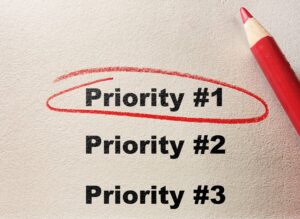What is virtual selling?
Virtual selling is the process by which sales professionals, executives, and business owners interact and engage with buyers virtually to introduce, convert and close the sale of their product or service.
The process of virtual selling vs face to face selling differs based on the use of software and various technologies to enable communications and enhance the buyer’s experience.
How do you sell to customers virtually?
Sales professionals and executives that sell B2B often believe that virtual selling is replacing existing customer-facing interactions with similar virtual interactions.
Instead, it’s essential to assess the effectiveness of virtual interactions compared to previous successful face-to-face sales tactics by monitoring two key variables.
Let’s discuss some virtual selling techniques to help you ensure you get the most from every virtual transaction.
Monitor Buyer Interactions Closely
The key to an effective virtual selling strategy is to create a virtual experience that is both interesting and engaging for your buyer. Monitoring buyer interactions such as response to outreach, engagement during presentations, and feedback following a presentation are key success measures.
Solidify Relationships with Clients
To transition buyers accustomed to meeting face-to-face to a virtual selling environment requires that you have solid relationships in place. Building and maintaining trust are critical factors to ensuring your virtual selling strategies are effective.
Why virtual selling is important
The pandemic has accelerated the adoption of virtual selling. As a result, buyers and sales professionals realize the significant benefits and opportunities offered by adopting virtual selling strategies.
Virtual Sales in a post-pandemic environment
Virtual selling creates a significant opportunity for sales professionals, executives, and business owners when done correctly. Primarily virtual selling or remote selling can allow sales professionals to hold multiple meetings with buyers in a day, rather than being limited based on travel time.
It is also easier and faster to scale virtual selling than in-person selling as there is no need for additional sales talent for each region or sales territory.
Make buyers feel comfortable.
A recent study by McKinsey identified that over 70% of B2B buyers preferred remote human interactions or digital self-service.
Buyers have quickly become accustomed to virtual selling as a way of doing business. Of course, meeting virtually rather than in person keeps them safe, but importantly, it offers a much more efficient means of engaging with sales professionals.
As decision-making in b2b organizations becomes increasingly complex, buyers can interact as necessary without sitting through extensive meetings or presentations.
Don’t skimp on preparation.
Of all the virtual selling tips to consider, the most important one that many sales professionals disregard is the importance of preparation.
When sales professionals invest time in understanding who their buyer is, what their company offers, and what their specific needs might be, their chances to engage and convert buyers increases significantly.

What are social selling tools?
When it comes to selling virtually, identifying the right tools and using them to our advantage will determine our degree of effectiveness.
Social selling tools are the social networks and software that sales professionals can use to find, connect with and engage potential buyers. The key to being effective is ensuring you use the right social tools considering your buyer’s preferences.
Technology that rocks virtual selling.
Selecting the right technology to sell in a virtual environment is vital. For example, some of my favorite social selling technology includes the following software:
LinkedIn Sales Navigator: The sales navigator feature allows you the opportunity to search, save and segment potential buyers on LinkedIn.
Hootsuite: This software will allow you to schedule and share content across various social networks to spread the word about your product or service.
Lusha: Easily find contact information for potential buyers and referrals within your existing LinkedIn network using this software.
Awario: Practice social listening and stay on top of the conversations you’ll want to engage in with Awario.
What platforms are optimal for your business
There is no single software or solution that will provide everything you need. Instead, it’s essential to look at your existing sales processes to determine where gaps exist.
Use the following questions to identify what platforms or software you’ll need:
- Where are the weaknesses in our social selling strategy today?
- What software or tools exist that can address these weaknesses?
- How can we integrate this technology to enhance our selling processes?
Being selective about the software platforms you choose will ensure that best practices in selling are enhanced and replicated, not lost amidst a myriad of unnecessary software features or steps.
The role of video calls in sales
The use of video is one of the main differences between virtual meetings vs face to face. The key is to use video effectively to enhance the quality of the relationship between the buyer and the conversion speed to a customer.
The key to ensuring video is practical is to follow the five fundamentals of successful video calls:
- Allow additional time: Unexpected network glitches and software updates can delay logging in. For that reason, always allow extra time when using video.
- Be familiar with the platform: Although most video platforms are similar, there are always nuances. Make sure you are familiar with how to chat, upload documents and move around the software you select.
- Let your customer decide: Don’t force customers to use your preferred video platform. Instead, the responsibility is to ensure you are familiar with any platform your customers are using.
- Focus on the camera, not your screen: Using video effectively requires eye contact. Make sure you focus on the camera to give the impression of maintaining eye contact with your buyers.
- Be seen and heard: If your lighting is poor, you’ll lose the attention of your buyer. Make sure to use well-lit rooms when using video to ensure your customers can see your face.
How can I improve my virtual selling skills?
Like any skill, virtual selling takes practice. However, you can incorporate some best practices that will give you a competitive advantage over your competitors.
Seed your presentation with pre-call materials
According to a recent Gartner study, today’s B2B buyers spend nearly 50% of their time researching a purchase before they ever engage with sales.
For this reason, we must seed pre-call materials and critical information that buyers would have encountered on our website, social networks, or marketing materials into our presentation.
Doing so bridges the gap between the buyer’s research and what we’re offering. When we avoid confusing the buyer, we make a faster transition to close the sale.
Supplemental materials after the call
In a virtual presentation, it’s easy for buyers to forget. Moreover, unlike a face-to-face meeting, there are no materials to leave behind for buyers to peruse at their leisure.
For this reason, you always want to follow up after your presentation with supplemental materials. The key is not to overwhelm the buyer in content but rather share anything supporting the points you made during your presentation.
Examples of supplemental materials include copies of the slides you presented, videos of your product or service in use, testimonials of happy customers or clients, and documents highlighting or supporting key points you raised, such as case studies.
Plan for surgical follow-up
A study by the Brevet Group identified that 80% of sales require a minimum of five follow-ups, yet 94% of sales professionals have given up after four follow-ups.
If you want to get the sale, you need to be strategic and surgical about how you follow up. Sending an email with the same messaging, for example, is not strategic. Instead, use virtual selling techniques to enhance the follow-up process.
You can enhance your follow-up by incorporating video into your email using tools like Vidyard or Hippo. Standard video and hosting platforms such as YouTube or Vimeo can also be helpful in product demonstrations or to share client or customer testimonials.
The more personalized and customized the follow-up approach is, the greater your chance to get and keep your buyer’s attention.
Deal with questions/objections and close the sale.
If you’re still wondering what virtual selling skills are, the most important are those that help you close the sale. After you’ve connected with your buyer and delivered your presentation, you’ll need to ensure you keep the deal moving towards the close. For this reason, you should expect and prepare for objections.
The best way to be prepared is to identify the most common objections you hear and prepare your response. Test responses with your peers to ensure they are both reasonable for what you can deliver and directly respond to the objection.
Never respond with “let me get back to you” or “I’ll have to ask my boss.” Being prepared also means you have the right people involved in your virtual meetings or discussions who can address objections that are beyond you to keep the conversation moving forward.
Jumpstart Your Virtual Selling Journey
If there is something we know today, it’s that virtual selling is here to stay. Selecting technology that enhances your sales processes; and focusing on creating a strong, positive, virtual experience for buyers, you can become a virtual selling master!
If you want to understand how to sell virtually or are curious about how you make virtual sales, start by identifying the most significant gaps in your virtual selling process today.
Equipped with this, you’ll be able to identify the best technology, tools, and techniques to accelerate your virtual selling success.
© Shawn Casemore 2021. All Rights Reserved.




Share This Article
Choose Your Platform: Facebook Twitter Google Plus Linkedin